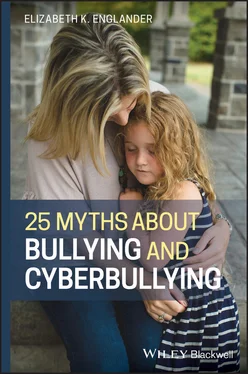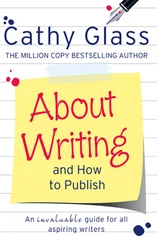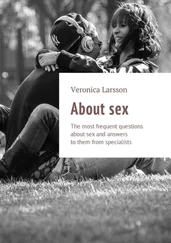1 Cover
2 About the Author About the Author Dr. Elizabeth K. Englander is the founder and executive director of the Massachusetts Aggression Reduction Center ( MARC ) at Bridgewater State University, delivering programs, resources, and research to more than 400 schools every year nationwide. As a researcher and a professor of psychology for 25 years, she is a nationally recognized expert in the areas of bullying and cyberbullying, childhood causes of aggression and abuse, and children's use of social media and technology. She was named Most Valuable Educator of 2013 by the Boston Red Sox because of her work in technological aggression and how it interacts with peer abusiveness in general. In 2018, she was appointed to the Massachusetts Governor's Juvenile Justice Advisory Council. Dr. Englander is also the chair of the Cyberbullying Workgroup for the Institute of Child Development and Digital Media. Each year, Dr. Englander trains and supervises graduate and undergraduate students and collaborates with multiple agencies around the state of Massachusetts and across the nation.
3 Preface
4 Chapter 1: Why Talk About Myths Instead of Facts?
5 Chapter 2: Myth #1: Bullying is usually about a big kid beating up a smaller kid.
6 Chapter 3: Myth #2: Bullying causes suicide and homicide. 3.1 Question #1: Can being bullied cause a child to begin thinking about suicide? 3.2 Question #2: When should a parent be most worried about bullying leading to suicidal thoughts or actions?
7 Chapter 4: Myth #3: Bullying is a normal part of childhood.
8 Chapter 5: Myth #4: Kids who are small and physically weak are targeted for bullying.
9 Chapter 6: Myth #5: The most important thing is what they did to you.
10 Chapter 7: Myth #6: Cyberbullying is just like bullying, only on the computer.
11 Chapter 8: Myth #7: Bullying and cyberbullying are separate problems.
12 Chapter 9: Myth #8: Most adults cannot help kids with computer or Internet issues, since kids typically know more than they do.
13 Chapter 10: Myth #9: Bullying and cyberbullying stop after high school.
14 Chapter 11: Myth #10: Cyberbullying is usually anonymous.
15 Chapter 12: Myth #11: Cyberbullying is the most emotionally devastating form of bullying.
16 Chapter 13: Myth #12: Bullies have emotional problems.
17 Chapter 14: Myth #13: All children all equally vulnerable to bullying.
18 Chapter 15: Myth #14: Bullies are raised in dysfunctional families by parents who are bullies themselves.
19 Chapter 16: Myth #15: Revenge is an effective way to handle bullies.
20 Chapter 17: Myth #16: Bullies don't understand how much they're hurting the target.
21 Chapter 18: Myth #17: Schools don't do anything about bullying.
22 Chapter 19: Myth #18: Schools can't take any action in cyberbullying cases.
23 Chapter 20: Myth #19: Schools could absolutely stop bullying if they wanted to.
24 Chapter 21: Myth #20: When kids shake hands and make up, the bullying stops.
25 Chapter 22: Myth #21: There’s no point in forcing kids to be nicer to each other, because they’ll just be mean again when the adults aren’t there.
26 Chapter 23: Myth #22: If only kids would report to adults, the problem would be solved.
27 Chapter 24: Myth #23: The best way to stop bullying is for bystanders to confront bullies and stop bullying episodes.
28 Chapter 25: Myth #24: The best way to deal with cyberbullying is to keep kids off their phones and computers.
29 Chapter 26: Myth #25: Just ignore them, and they'll leave you alone. That's the best strategy for dealing with bullies.
30 Conclusion: The Good, the Bad, and Why It Usually Isn't Ugly
31 Index
32 End User License Agreement
1 Cover
2 Table of Contents
3 Begin Reading
1 iii
2 iv
3 vii
4 ix
5 x
6 xi
7 1
8 2
9 3
10 4
11 5
12 6
13 7
14 8
15 9
16 10
17 11
18 12
19 13
20 14
21 15
22 16
23 17
24 18
25 19
26 20
27 21
28 22
29 23
30 24
31 25
32 26
33 27
34 28
35 29
36 31
37 32
38 33
39 34
40 35
41 36
42 37
43 38
44 39
45 41
46 42
47 43
48 44
49 45
50 46
51 47
52 48
53 49
54 51
55 52
56 53
57 54
58 55
59 57
60 58
61 59
62 60
63 61
64 62
65 63
66 64
67 65
68 66
69 67
70 68
71 69
72 70
73 71
74 72
75 73
76 74
77 75
78 76
79 77
80 78
81 79
82 81
83 82
84 83
85 84
86 85
87 86
88 87
89 88
90 89
91 90
92 91
93 92
94 93
95 95
96 96
97 97
98 98
99 99
100 100
101 101
102 102
103 103
104 105
105 106
106 107
107 108
108 109
109 111
110 112
111 113
112 114
113 116
114 117
115 118
116 119
117 120
118 121
119 123
120 124
121 125
122 126
123 127
124 128
125 129
126 130
127 131
128 132
129 133
130 134
131 135
132 136
133 137
134 138
135 139
136 140
137 141
138 142
139 143
140 144
141 145
142 146
143 147
144 148
145 149
146 151
147 152
148 153
149 154
150 155
151 156
152 157
153 158
154 159
155 160
156 161
157 162
158 163
159 164
160 165
161 166
162 167
163 168
164 169
165 170
166 171
167 172
168 173
169 174
170 175
171 177
172 178
173 179
174 180
175 181
176 182
177 183
178 184
179 185
180 186
181 187
182 188
183 189
25 Myths About Bullying and Cyberbullying
Elizabeth K. Englander

This edition first published 2020 © 2020 John Wiley & Sons, Inc.
All rights reserved. No part of this publication may be reproduced, stored in a retrieval system, or transmitted, in any form or by any means, electronic, mechanical, photocopying, recording or otherwise, except as permitted by law. Advice on how to obtain permission to reuse material from this title is available at http://www.wiley.com/go/permissions.
The right of Elizabeth K. Englander to be identified as the author of this work has been asserted in accordance with law.
Registered Office John Wiley & Sons, Inc., 111 River Street, Hoboken, NJ 07030, USA
Editorial Office 111 River Street, Hoboken, NJ 07030, USA
For details of our global editorial offices, customer services, and more information about Wiley products visit us at www.wiley.com.
Wiley also publishes its books in a variety of electronic formats and by print‐on‐demand. Some content that appears in standard print versions of this book may not be available in other formats.
Limit of Liability/Disclaimer of Warranty While the publisher and authors have used their best efforts in preparing this work, they make no representations or warranties with respect to the accuracy or completeness of the contents of this work and specifically disclaim all warranties, including without limitation any implied warranties of merchantability or fitness for a particular purpose.
Читать дальше













